CARDIOVASCULAR & HYPERTENSION RESEARCH
Hypertension is a prominent cause of morbidity and death throughout the world affecting 1 in 3 adults in the US and approximately 20-30% of the world’s population. It is a killer—and oft termed “silent killer”—because while hypertension may not induce primary clinical signs it places individuals at higher risk for heart disease, stroke, and kidney failure. Furthermore, hypertension disproportionately affects African-Americans. Studies of the mechanisms of hypertension are pursued from various angles by the faculty who serve as trainers in this summer research program. With expertise in pharmacology, physiology, toxicology, neurobiology, chemistry, and pathology, these individuals have made significant advances in our understanding of blood pressure regulation.

Andres Contreras, DVM, PhD: Dr. Contreras studies the mechanisms by which high blood pressure-driven vascular mechanical forces and structural cues alter the capacity of perivascular adipose tissue (PVAT) to exert its vasoactive function and direct adipocyte progenitors and adipocyte phenotypes. His lab also examines the role of lipolysis on the development of adipose tissue inflammation in states of acute negative energy balance. Together, these two research focus areas are reshaping our understanding of the onset and progression of hypertension, leading to the development of new interventions to reduce cardiovascular disease incidence and prevalence.

Anne Dorrance, PhD: Dr. Dorrance’s research focuses on understanding the effects of hypertension and obesity on the cerebral arteries. It is clear that hypertension and obesity cause structural changes, known as remodeling, in the cerebral arteries. These changes increase an individual’s risk cerebrovascular disease including stroke and dementia. Her research is focused on understanding the mechanisms that drive the cerebral artery remodeling process.

Adam Lauver, PhD: Dr. Lauver’s research focuses on the discovery and development of novel therapeutic agents for the treatment of cardiovascular diseases. He employs in vivo models of thrombosis, reperfusion injury and arrhythmia to gain a better understanding of the mechanisms by which these diseases occur while also identifying exciting new targets for treatment. More recently, his lab discovered that a class of vasodilator drugs has potential utility in the prevention of contrast-induced acute kidney injury, which is a disease that may involve vasoconstriction of peritubular capillaries.
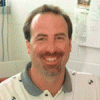
Greg Swain, PhD: Obesity and hypertension are important health challenges. The association of obesity and hypertension is complex and thought to involve multiple factors. Sympathoactivation can contribute to increased vascular tone, increased cardiac output, and increased blood pressure. The Swain group is investigating if obesity is linked to hypertension by increased sympathetic nerve activation and if this increased sympathetic activation is caused by adipocytes that surround the vessels.

Stephanie Watts, PhD: The Watts laboratory is dedicated towards understanding the mechanisms by which smooth muscle in arteries and veins contribute to hypertension, in the hopes of developing novel treatments for this disease. The Watts lab uses a multi-faceted technical and integrated approach towards studying hypertension so as to understand the mechanism from a molecular to a whole animal level.

Hui Xu, PhD: Dr. Xu’s research is focused on the autonomic nervous system, molecular signaling and receptor/ion channel interactions in the vasculature.She is using comprehensive approaches to study how these factors regulate vascular function and blood pressure in health and human diseases.
Airway Research
Environmental exposures to pollutants, pathogens and microbiota pose major risk factors for heart and lung diseases such as asthma, tuberculosis, and numerous cardiovascular alterations. Asthma prevalence is highest in urban communities with economically disadvantaged individuals suffering at disproportionate rates. Furthermore, industrial sources of air pollution and other toxicants are disproportionately located in low income neighborhoods. This group of faculty trainers investigate various aspects of airway disease, with overlapping areas of emphasis including the genetic and environmental risk factors for asthma, the health effects of air pollutants and other toxicants, and the microbiology of important lung pathogens and host microbiomes.
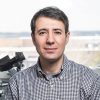
Robert Abramovitch, PhD: The mission of Dr. Abramovitch’s research program is to make basic and applied research discoveries that jumpstart the development of new drugs to treat tuberculosis. His lab is pursuing the physiology of Mycobacterium tuberculosis (Mtb) pathogenesis and persistence with a long-term vision is to identify the molecular mechanisms by which Mtb establishes persistent infections and then translate this new knowledge to develop novel chemical therapeutics that reduce persistence, antibiotic tolerance and shorten therapy.

Stephan Carey, DVM, PhD: Dr. Carey’s research efforts are directed toward investigation of the effects of air pollutants on the developing respiratory airways of children, as there has been increasing evidence in recent years that children are more susceptible than adults to the adverse respiratory effects of air pollutants. A focus of his research is the identification of morphologic, biochemical, and molecular determinants of this heightened susceptibility of children to respiratory airway injury caused by common air pollutants including ozone, aeroallergens, and mycotoxins.

Susan Ewart, DVM, PhD: Dr. Ewart's research is focused on the molecular mechanisms of airway diseases and allergies in humans and animal models. Her lab is performing genetic and epigenetic studies to identify individual genes, haplotypes, alleles and epigenetic marks that contribute to asthma, rhinitis and eczema as well as combinations of these allergic diseases.
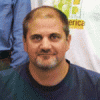
John LaPres, PhD: Dr. LaPres's laboratory is focused on the PAS superfamily of transcription factors and their role in hypoxia. These transcription factors play a central role in sensing environmental changes and promoting the biological response to cope with these changes. The goal of his research is to completely understand the signaling cascades of certain PAS proteins and how they mediate their pleiotropic effects on biological systems.

Linda Mansfield, VMD, PhD: Dr. Manfield’s research is focused on the microbiome, bacterial pathogenesis, and mechanisms of immune modulation by the food-borne-pathogen Campylobactor jejuni. As relates to the BRUSH program, the Mansfield lab is studying the role of the host microbiome in providing resistance or enhancing susceptibility to allergic diseases, such as eczema, asthma, and rhinitis. Their overarching hypothesis is that alterations in the composition of the gut, nasal, or skin microbiome caused by early environmental exposures induce or prevent allergic sensitization. Alterations may be due to particular microbiome composition, shifts in composition—such as with antibiotic treatment—or exposure to specific microbial virulence factors or metabolic products.

Masako Morishita, PhD: Dr. Morishita’s research is aimed at 1) understanding exposure pathways of particulate matter air pollution and metals and their adverse impacts to respiratory and cardiovascular health, and 2) designing interventions in community-based studies to mitigate adverse air pollution exposures and improve cardiovascular health.
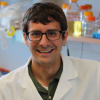
Andrew Olive, PhD: Dr. Olive’s research group combines genetic approaches with in vivo disease models to study chronic infections from both the host and bacterial perspective, focusing on Mycobacterium tuberculosis, the leading cause of infection-related death worldwide. By defining resistance and tolerance mechanisms, they aim to identify targetable aspects of protective immunity in the lung that can ultimately be used to develop effective vaccines or host directed therapies.

Robert Quinn, PhD: Dr. Quinn’s laboratory studies how metabolites from the human microbiome shape our health and disease and specifically how changes in the cystic fibrosis (CF) lung microbiome cause disease in patients. Using mass spectrometry-based metabolomics, nucleic acid sequencing, and novel microbial culture techniques, their work has shown how changes in metabolite production from the microbiome lead to acute flares of chronic airway disease.
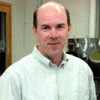
James Wagner, PhD: Dr. Wagner conducts translational studies using therapeutic interventions of novel vitamin and antiinflammatory agents to protect from exacerbations of asthma and other inflammatory airways diseases. A second research focus is the cardiopulmonary responses to particulate matter and ozone inhalation exposure, including the analysis of blood pressure, heart rate and ECG abnormalities.
BLOOD CELLS AND COMPONENTS IN TISSUE PATHOLOGY RESEARCH
Investigators in this group represent diverse interests including investigative pathology, toxicology, and metabolic disease. They work to define mechanisms whereby blood cells and components (such as coagulation factors) modify tissue pathology in the context of acute injury or chronic disease, including acute (drug toxicities) and chronic (obesity-associated sequelae) pathologies, some of which occur at disproportionately high rates in low income and minority populations. These investigators have complimentary expertise in metabolic disease, lung and liver pathology, drug toxicity, and blood cell signaling.

Bryan Copple, PhD: Dr. Copple’s research is focused on understanding the mechanisms that regulate immune cell activation during tissue injury, specifically, how macrophages become activated and produce inflammatory cytokines during toxicant-induced liver injury. Elucidation of these pathways could identify novel drug targets aimed at limiting liver injury or promoting liver regeneration in patients with liver toxicity.

Sean Crosson, PhD: Dr. Crosson’s research is focused on understanding signal transduction mechanisms that regulate stress physiology and bacterial infection biology. He has defined new mechanisms enabling growth and survival of bacteria in mammalian tissue, including the General Stress Response (GSR) pathway of Alphaproteobacteria, as well as important roles for two-component regulatory systems and alternative sigma factors in the control of Brucella abortus infection biology.
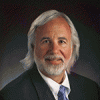
Norbert Kaminski, PhD: Dr. Kaminski's research in immunopharmacology and immunotoxicology is directed toward the elucidation of the molecular mechanisms by which drugs and chemicals modulate signal transduction cascades and gene expression during lymphocyte activation. One major research focus is to characterize the mechanism for immune modulation by cannabinoid compounds. Another research focus is the characterization of the molecular mechanism responsible for altered B cell function produced by halogenated aromatic hydrocarbons, including dioxins and polychlorinated biphenols.

James Luyendyk, PhD: Dr. Luyendyk’s research is focused on identifying mechanisms whereby coagulation factors present in blood drive the pathogenesis of acute and chronic liver disease. His research over the last several years has emphasized that liver disease cannot solely be attributed to changes in local factors, but rather is driven by changes in blood cell activity and blood coagulation cascade activation. His research program investigates mechanisms of acute liver damage and regeneration, obesity and fatty liver disease, and tissue fibrosis.

Cheryl Rockwell, PhD: The Rockwell laboratory studies the role and regulation of immune cell polarization in disease and immunity. Studies of T cell polarization as well as the polarization of macrophage and B cell populations are pursued. The laboratory also investigates how xenobiotics can modulate immune cell function with a particular emphasis on specific food preservatives and environmental contaminants.

Dana Spence, PhD: The Spence group, housed in the Institute for Quantitative Health Science & Engineering (IQ), currently has 3 core projects under investigation. Broadly defined, these projects are in the fields of (1) diabetes, (2) multiple sclerosis (MS), and (3) blood banking. Our group is trying to prove that the RBC is a key determinant in complications associated with these projects, especially its role with C-peptide, the 31 amino acid peptide that is co-secreted with insulin from pancreatic β-cells. While a number of measurement schemes (classic scintillation counting, microscopy, mass spec) and methods (ELISA, cell culture, separation science) are used to investigate these problems, it has been our ability to fabricate 3D-printed devices that has advanced our understanding of the molecular level events important to each project. Various enabling technologies from the 3D-printer are employed, with an emphasis on 3D-printed devices with integrated membranes. Students joining my group will have the opportunity to work on their choice of these 3 main projects, along with the lab techniques described.
ENVIRONMENTAL SCIENCES

Eran Andrechek, PhD: Dr. Andrechek started his research with an undergraduate research experience followed by graduate school at McMaster University where he examined mouse models of breast cancer. During his postdoc he learned how to apply bioinformatics to breast cancer samples. His lab currently uses an approach where they combine bioinformatics with mouse models to study the genes that drive breast cancer to spread to other locations in the body. Bioinformatics

Jamie Bernard, PhD. Dr. Bernard’s laboratory studies mechanisms of early stage carcinogenesis in order to find novel targets for intervention. She also performs natural product drug discovery research. Cancer areas include breast cancer, skin cancer, and multiple myeloma. Pharmacology, Toxicology

Sudin Bhattacharya, PhD: Dr. Bhattacharya leads a lab that conducts research at the interface of computation and biology, using quantitative tools to study the signaling and transcriptional networks that regulate cell fate and the perturbation of these networks by environmental pollutants. Bioinformatics, Toxicology

Brian Johnson, PhD: Dr. Johnson engineers advanced cell culture models of cell signaling during development and disease to gain insight into how cells communicate with one another. His lab also evaluates the effects of drugs and other chemicals in those systems, leveraging automation and high-content imaging to determine how the cells are behaving and what their responses are. Toxicology

Kin Sing Lee, Ph.D: Dr. Lee has more than 20 years of research experience in chemical biology. His group uses organic and analytical chemistry to develop tools to investigate how disruption of dietary lipid metabolism by environmental toxicant affects aging and neurodegeneration. Toxicology

Rita Strakovsky, PhD: Dr. Strakovsky's research focuses on various modifiable lifestyle and environmental factors that can be targeted to protect maternal and child health. Her group's current research in human populations uses molecular epidemiology and biostatistics techniques to address several questions related to the health of mom and her developing fetus during pregnancy. Specifically, she is interested in understanding whether exposure to endocrine disrupting chemicals in pregnancy impacts maternal hormone levels and/or metabolism, and whether these disruptions persist postpartum. She is also interested in whether exposure to endocrine disrupting chemicals or maternal obesity disrupt fetal development, with a special focus on child metabolic and reproductive health. Toxicology, Epidemiology, Bioinformatics

Neera Tewari-Singh, PhD: Dr. Tewari-Singh’s lab focuses on understanding mechanisms of toxicity and inflammation from mainly dermal and ocular exposures to chemical agents employing state-of-the-art molecular techniques and systems toxicology approaches. Developing effective and targeted medical interventions is a critical component of the modern global strategy to overcome the challenges of chemical emergencies in both civilian and military populations, making our research highly significant. Toxicology
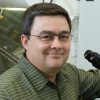
Brad Upham, PhD., is an Associate Professor in the Department of Pediatrics and Human Development. His research expertise is in the broad field of environmental health. He uses in vitro animal cell models to study cellular mechanisms by which oxidative stress and environmental toxicants affect cell proliferation, differentiation and apoptosis cumulating into states of human diseases, such as cancer and inflammation. Toxicology

Timothy Zacharewski, PhD: Dr. Zacharewski is a Professor and Interim Chair of the Department of Biochemistry & Molecular Biology and a member of the Institute for Integrative Toxicology. Dr. Zacharewski studies mechanistic toxicology, elucidating receptor-mediated mechanisms of toxicity using complementary omics and computational approaches. Bioinformatics, Toxicology
